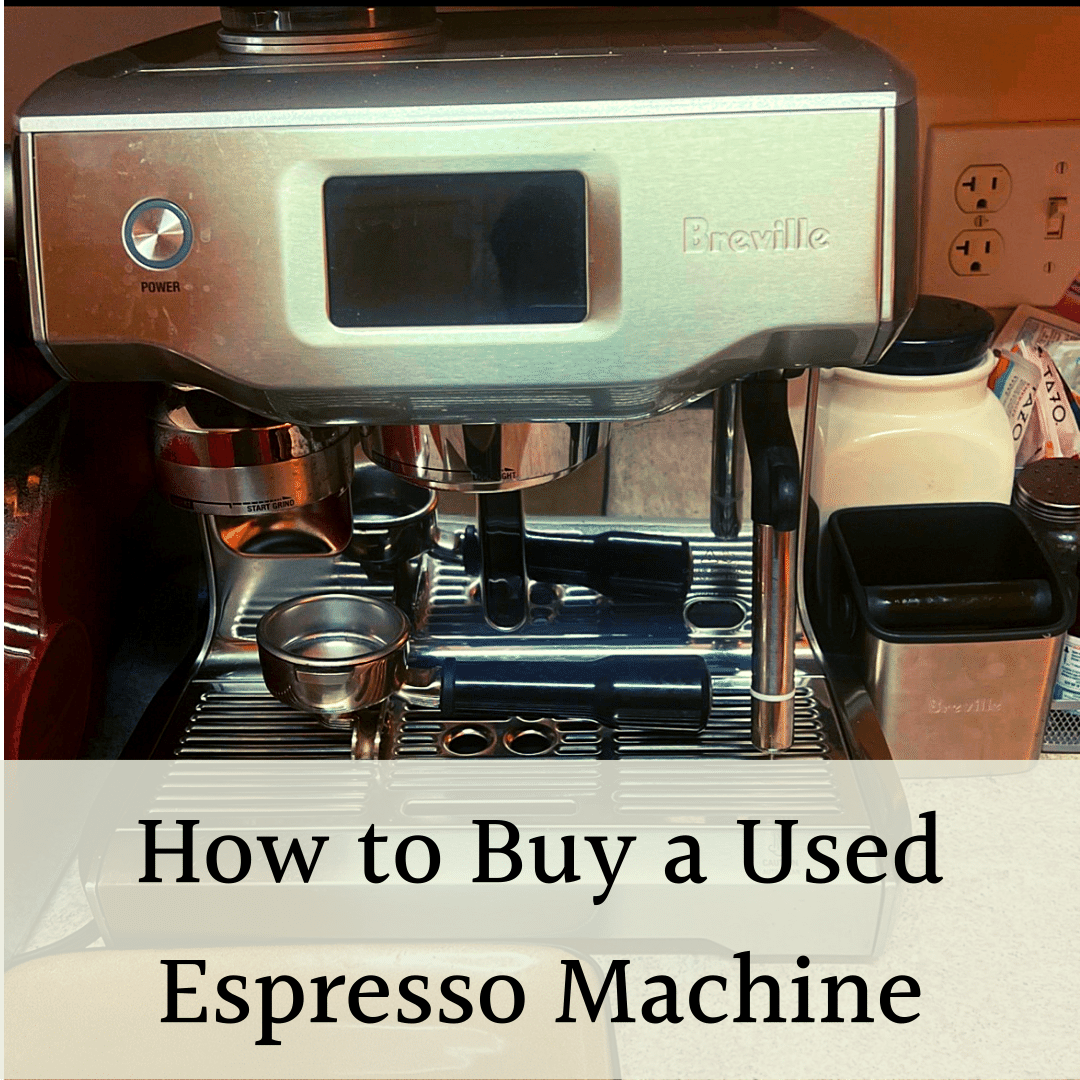Looking to score a killer deal on an espresso machine without emptying your wallet? A budget of $500 is the magic number where you can snag a durable machine that brews top-notch espresso. But the sea of options can be overwhelming.
I’ve done the heavy lifting for you and curated the seven absolute best espresso machines under $500. My personal favorite? The Bambino Plus. It boasts a Thermojet heating system and automatic milk frothing that’ll make your taste buds dance. And if that’s not your cup of espresso, the Gaggia Classic Evo is my runner-up — its boiler and user-friendly design are hard to beat.
But wait, there’s more! I’ll also arm you with a comprehensive buying guide, so you can confidently pick the espresso machine that’s tailor-made for you.
Top 7 Espresso Machines Under $500
| Product | Name | Features | Price |
|---|---|---|---|
Top Pick 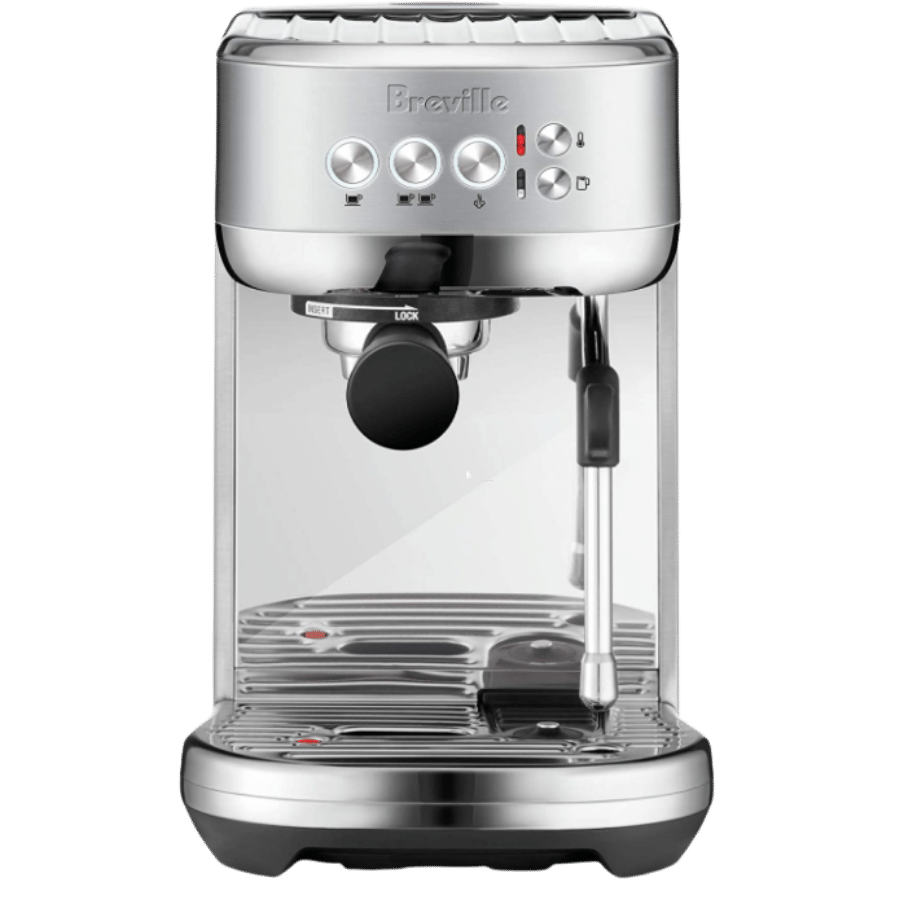 |
| Check Amazon | |
 |
| Check Amazon | |
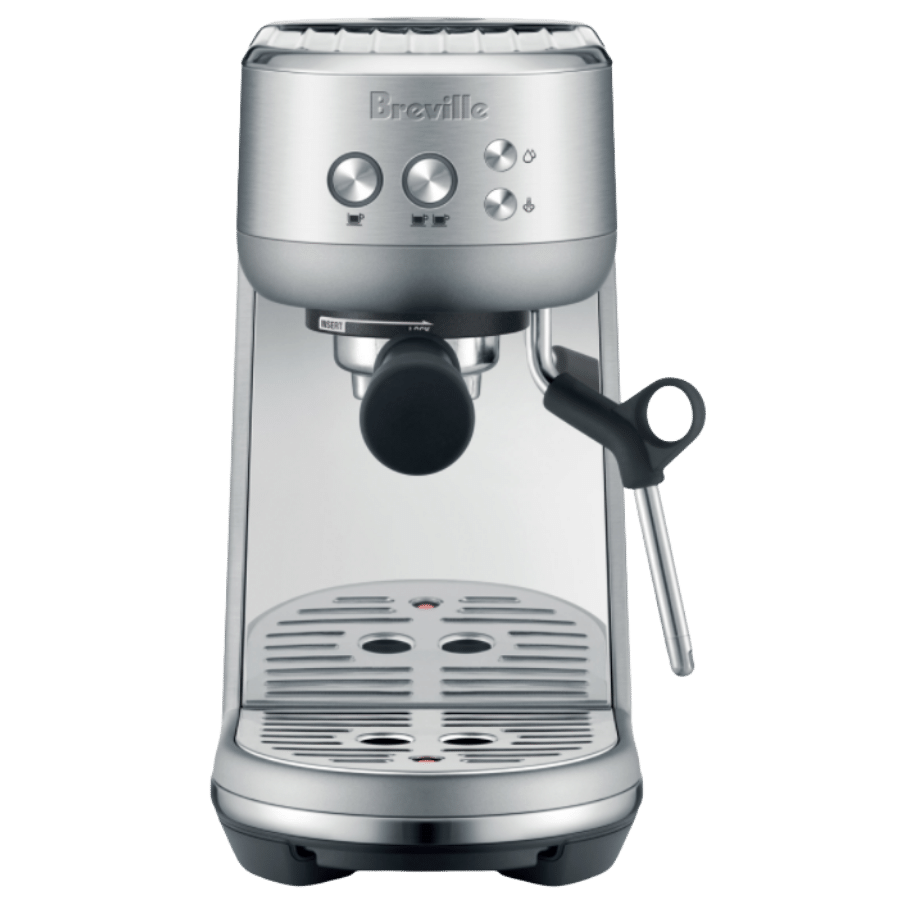 |
| Check Amazon | |
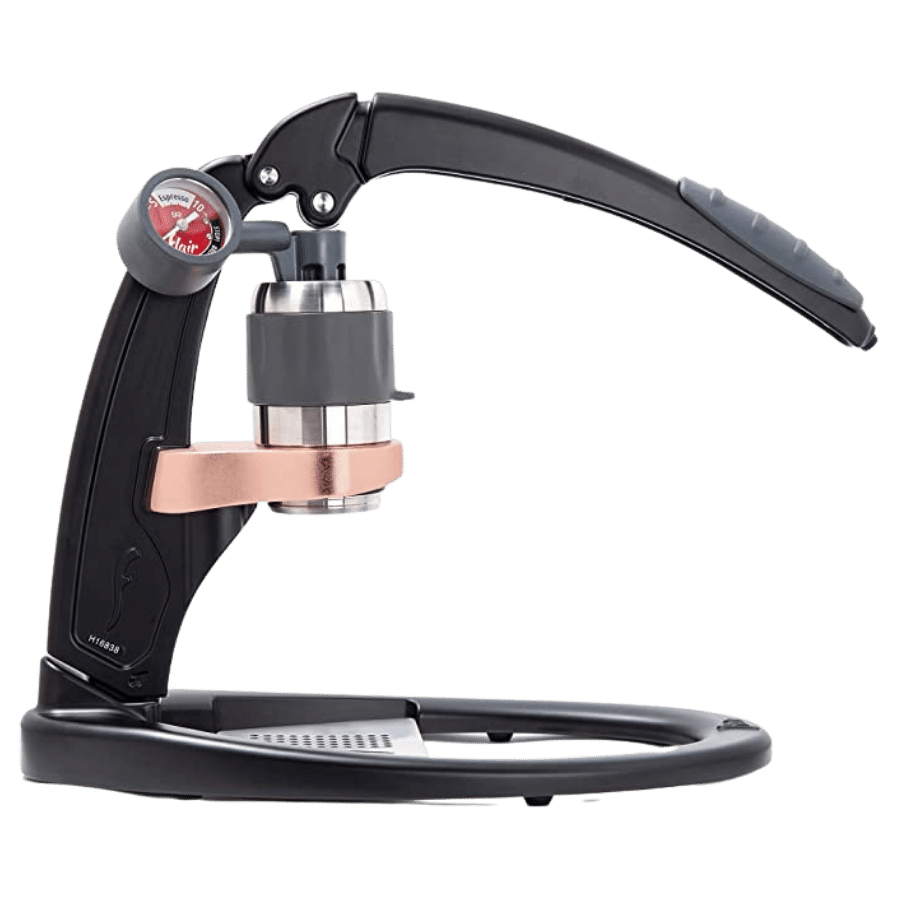 |
| Check Amazon | |
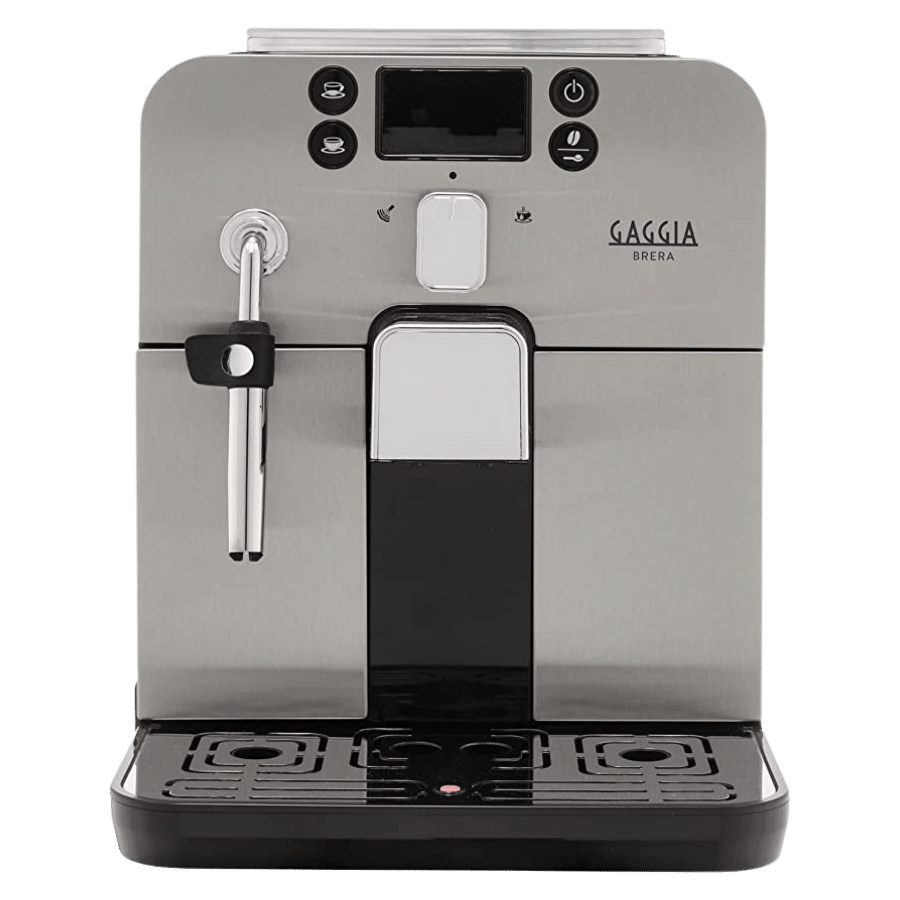 |
| Check Amazon | |
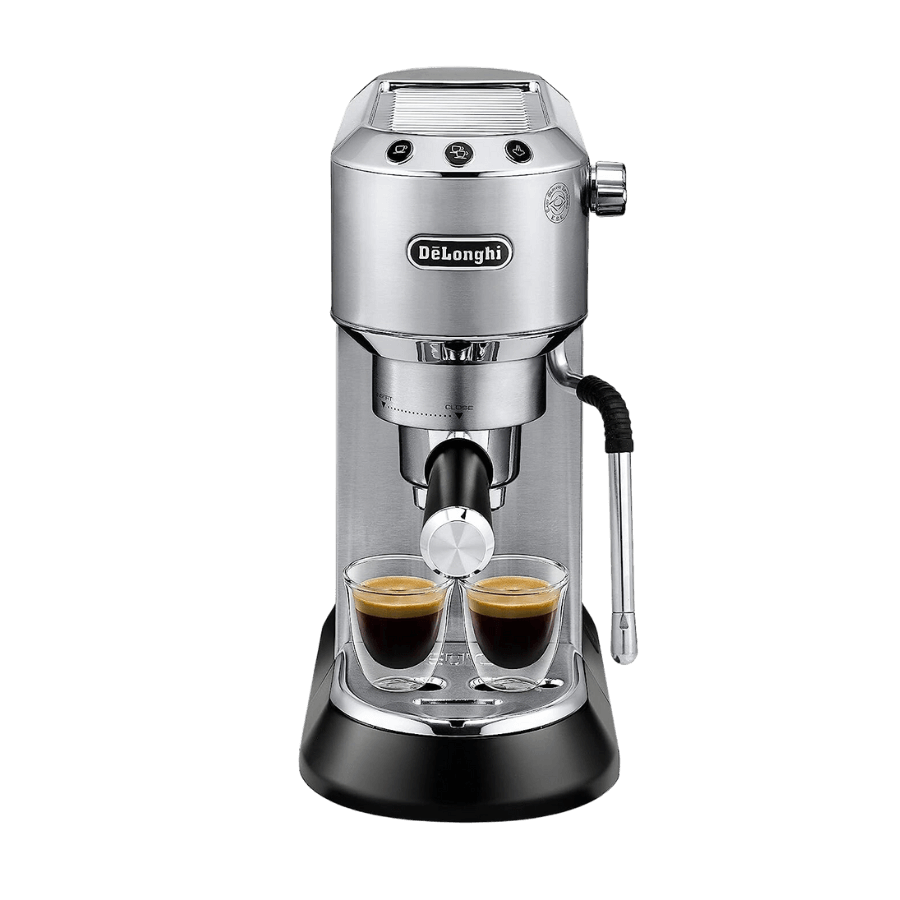 |
| Check Amazon | |
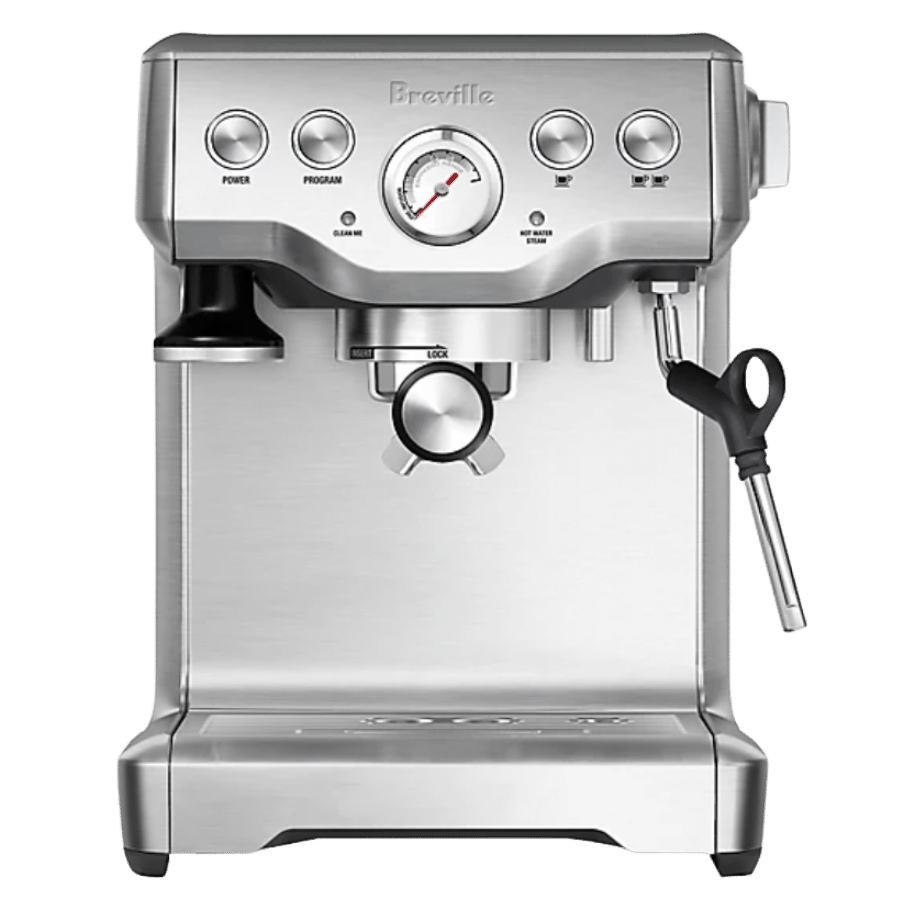 |
| Check Breville |
1. Breville Bambino Plus

Breville Bambino Plus highlights:
- Razor precision dosing tool
- 3-second heat up time
- Automatic steam wand
The first thing that makes Bambino Plus stand out is its compact footprint. But don’t let the smaller size fool you. It has a great internal heating system with Breville’s latest thermocoil and intuitive controls.
The standout feature of the Bambino Plus is the steam wand. It’s an automatic steam wand with preset milk temperature and texture options, which delivers a nice microfoam thanks to the four holes on the tip. It’s a nice addition at this price point.
All you have to do is place the milk container on the tray, press the button with the preset option you want, and the machine will do all the work.
The wand works so well because of the temperature control sensors on the drip tray. You can choose between three options for milk temperature (50, 70, or 90 degrees Celsius) and what texture you want. The sensors work to tweak the temperature according to your preferences.
As far as espresso brewing, Bambino Plus uses Breville’s latest technology — a Thermojet heating system. While you can’t brew and steam simultaneously, you can do these actions one after the other with virtually no wait time.
There’s also a PID and pre-infusion as well. The PID ensures there’s consistent temperature control. With the low-pressure pre-infusion, you’re guaranteed a flavorful espresso. The machine comes with pressurized and non-pressurized baskets, which makes it easy whether you use pre-ground coffee or freshly ground beans.
Who is it for? Breville Bambino Plus is the best espresso machine under $500 if you want a machine that pulls a flavorful espresso and automatically steams milk. If you don’t want to work the steam wand on your own, this is a good choice.
Pros
Large water reservoir
Automatic milk frother with three temperature options
Low-pressure pre-infusion
Single and double-wall filter baskets
Cons
No grinder
No hot water outlet, which limits drink options
2. Gaggia Classic Evo

Gaggia Classic Evo highlights:
- 58mm portafilter
- Noise dampening design
- Powerful steam wand
The next best espresso machine under $500 is Gaggia Classic Evo. This is one of Gaggia’s best espresso machines. It comes with a stainless steel body, a commercial steam wand, and a 58 mm portafilter which is commonly found on commercial espresso machines.
Gaggia recently upgraded the Classic Pro and changed the machine’s name to Evo. The new version has an upgraded brass group, which means better performance and even better durability. Another great change is the machine’s pump, which is now 9 bars instead of 12. Nine bars is optimal for espresso extraction.
The Classic Pro has a 58 mm portafilter. This means you can add more ground coffee to create a larger and flatter puck, which results in a more flavorful espresso shot.
The heating system is a single boiler, which generates more consistent heat than a thermoblock. That also means it’s not the fastest espresso machine, as you’ll have to wait about five minutes for the coffee machine to heat up. But the combination of a 58 mm portafilter and boiler means consistent espresso.
Classic Evo has a three-way solenoid valve, which releases the pressure from the group head as soon as you’re done brewing. You can remove the portafilter and pull the next shot straight away, which comes in handy when you’re making coffee drinks for several people.
The Classic Evo is simple to use. There are only three buttons: power, brew, and steam. The simplicity is a double-edged sword: it’s easy to use, but hard to control. There’s no PID temperature control, so you’ll have to feel out when the water is hot enough (and not too hot) to brew. You’ll learn “temperature surfing” with the Gaggia Classic, or find a modification kit.
The Gaggia Classic Evo has a powerful steam wand with two holes. However, the holes point horizontally, which makes it harder to create a vortex and stretch the milk for microfoam.
Finally, I like how quiet it is. The Classic Evo has noise-dampening technology, which you’ll love when brewing first thing in the morning.
Lastly, these machines are built like tanks. The original design came out in 1991, and you can still find original, working models!
Who is it for? Gaggia Classic Pro is an excellent choice if you’re a beginner barista who wants a machine that’s easy to use. It’s also a great option if you want to practice making latte art.
Pros
58mm portafilter
Boiler system is more consistent for espresso
Easy to use controls
Cons
No PID temperature contol
Short height for brew head makes it hard to fit cups underneath
Plastic tamper
3. Breville Bambino

Breville Bambino highlights:
- Compact size
- Affordable price
- Hot water dispenser
The Breville Bambino is a no-frills espresso machine that makes excellent espresso and is one of the more affordable options on this list. Normally, we recommend the Bambino over the Bambino Plus for its value. However, since this list has a $500 budget, we recommend the Plus for the extra features.
However, the Bambino doesn’t lag behind the Plus regarding espresso flavor. Bambino has the same brewing technology as the Plus version. A low-pressure pre-infusion pushes water through the beans before the high-pressure extraction starts.
The PID controls the Thermojet heating system and ensures consistent extraction at optimal water temperature. Both machines have a 3-second heat-up with Breville’s modern heating system.
Breville Bambino is slightly smaller than the Bambino Plus (7.7 in x 12.6 in x 12.2 vs. 9.6 in x 16.3 in x 16.9 in) and has a smaller reservoir (47 oz vs. 64 oz).
However, a steam wand is one feature where Bambino and Bambino Plus differ significantly. Breville Bambino has a manual wand, while Plus has an automatic one. Also, Bambino’s wand only has one hole, compared to the four on the Bambino Plus, which means Bambino Plus can steam 20 seconds faster than the Bambino.
Still, I found the frothed milk quality to be similar. You’ll be able to steam and froth milk for both lattes and cappuccinos with Breville Bambino. The difference is the learning curve on the Bambino.
Finally, Breville Bambino has a hot water dispenser, which gives you a larger range of drinks compared to the Bambino Plus.
Who is it for? Breville Bambino is a great choice if you want to save money, which allows you to spend more on a great coffee grinder. You have modern internals to make good espresso with a smaller steam wand that is more forgiving and allows you to learn latte art.
Read our full comparison of the Bambino vs. Bambino Plus.
Pros
Hot water outlet
PID temperature control
Fast heating time
Cons
Longer steam time with one-hole wand
No grinder
4. Flair Pro 2

Flair Pro 2 highlights:
- Manual espresso machine
- Extremely compact (12 x 6 x 10 in)
- Bottomless portafilter
Flair Pro 2 is a unique espresso machine, as it’s manual. The brewing process is entirely human-powered, including generating nine bars of pressure. This espresso machine doesn’t use electricity to brew espresso.
Espresso lovers choose manual espresso machines because it gives complete control to the barista. The extra control over pressure and shot time are the key points of a manual machine. Even great semi-automatic espresso machines pump 12 bars or higher, which can brew too fast.
With a slow and steady pour, a manual espresso machine can achieve the highest level of espresso perfection versus other types.
For manual machines, the Flair Pro 2 is easy to use. It has a pressure gauge, so you can do pre-infusion, pressure profiling, and real-time control. The full control over pressure is the huge upside to a manual, as most machines are set to over nine-bars.
The filter basket is 46 mm, which is a bit small. A larger, flatter portafilter (like the Gaggia Classic Evo) is always better so water can flow evenly through the layers. You get a better extraction that way and better-tasting espresso. That said, the ability to control pressure mostly makes up for it, and the Flair Pro 2 comes with a nice tamper and dosing cone that make it easy.
The device is extremely lightweight. I was worried this espresso machine might wobble because it’s so lightweight, but no worries there. The lever arm and the base fit together securely. The silicone handle grip prevents your hands from slipping when pressing the coffee.
The biggest downside of the Flair Pro 2 is that you can’t brew milk drinks. It’s a manual, after all. This could be a serious negative if you’re a big latte lover. You’ll have to get a separate milk frother if you want lattes and cappuccinos.
Who is it for? Flair Pro 2 is a perfect choice for the espresso purist. If you want to achieve the highest level of perfection with full control, a manual espresso machine is for you. The Flair Pro 2 is easy to use and portable.
Read our round-up of the best Flair espresso makers.
Pros
Custom pressure gauge
Silicone handle grip
Simple setup and travel case
Removable parts are dishwasher safe
Cons
No steam wand (it’s manual!)
46mm portafilter is small and impacts espresso extraction
5. Gaggia Brera

Gaggia Brera highlights:
- Super-automatic espresso machine
- Stainless steel Panarello wand
- Rapid steam function
Gaggia Brera is a super-automatic machine, which contrasts the semi-automatics on the rest of this list. This is the only espresso machine on this list with a built-in coffee grinder. The coffee grinder is a ceramic burr with five settings. There’s also a bypass doser for pre-ground beans, which comes in handy when you want decaf.
Even though this is a super-automatic machine, it has a manual milk frother, so you’ll have to do some work yourself. This also means there’s a learning curve if you’ve never used a steam wand before. Brera’s steam wand can produce good foam but not the microfoam needed for latte art.
This is a pretty compact machine (10 x 15.5 x 11.5 in), so its components, such as the drip tray, water reservoir, and bean hopper, are smaller as well. This means frequent emptying and refilling.
Overall, Brera is very easy to use and has plenty of customization options. For example, you can decide how many beans you want your espresso to have, program cup size, and choose between three coffee strength options.
One thing I didn’t like is that it requires frequent descaling, and it takes a while, which can be annoying when you crave caffeine.
Who is it for? Gaggia Brera is a great choice for espresso drinkers who want an affordable super-automatic espresso machine. You’ll love this espresso machine if you don’t want to measure, grind, and tamp.
Read our round-up of the best Gaggia espresso machines.
Pros
Built-in grinder
Rapid steam function steams in 10 seconds
Programmable brewing
Two spouts can brew two espressos at the same time
Cons
Frequent descaling
Small water tank
6. Dedica Arte

Dedica Arte highlights:
- 15 bar pump
- Thermoblock heating system
- 35 oz water tank
Dedica Arte is a compact espresso machine that catches your eye with its sleek stainless steel finish combined with hard plastic, ensuring durability. Weighing just 8 lbs, it’s incredibly lightweight, making it a breeze to move around your kitchen.
Dedica Arte features a 51 mm portafilter and pressurized filter baskets. This is where most of my issue with the Dedica Arte (and many other DeLonghi machines) comes from. 51 mm portafilter size is problematic because the puck is too tall, which results in bitter shots. Another issue is that Dedica only comes with pressurized baskets. You can read all the reasons why they aren’t as good as non-pressurized in our pressurized vs. non-pressurized basket comparison.
However, even with these issues, Dedica could pull good shots. They have a decent crema and flavor. Moreover, once I switched to non-pressurized baskets, this compact little machine rocked my espresso world. I had much better results.
The thermoblock heating system is another standout feature, allowing you to start brewing in just 40 seconds. It’s a time-saver for busy mornings. The 35 oz water tank is on the small side, but you can pull multiple shots. I also liked the two-tiered drip tray, which let me fit taller cups for milk-based drinks.
One unique aspect of Dedica Arte is the “My LatteArt” steam wand. It’s a professional-style wand that does a great job frothing milk for your lattes and cappuccinos. It’s not the most movable, but it’s powerful enough to work on latte art.
Who is it for? Dedica Arte is the best choice if you want a compact, budget machine that has a powerful steam wand. It’s also a good option if you’re fine with upgrading to a larger filter basket.
Read our full Dedica Arte review.
Pros
Compact and lightweight
Powerful steam wand
Quick heating time
Cons
51 mm portafilter
Only comes with pressurized baskets
7. Breville Infuser

Breville Infuser highlights:
- Auto purge function
- Pre-infusion lets coffee bloom
- Comes with single and dual wall filter baskets
As the name says, The Infuser has a pre-infusion function, which means it pushes water through the beans at lower pressure before the extraction. The pre-infusion results in better extraction of the coffee oils and flavor.
The heating system is a 1600W thermocoil with PID. PID keeps the water at the right temperature, providing a consistent extraction and flavorful espresso shot.
An auto-purge function adjusts water temperature between steaming and brewing, so you get the optimal temperature for both actions.
I also liked that you can choose between a single or a double shot. There’s volumetric control with preset. You can reprogram the drink volume and manually override the settings, meaning you have more control and can brew espresso according to your preferences. The hot water dispenser comes in handy when you want tea or hot chocolate.
The steam wand swivels 360 degrees, so you can froth milk for milk-based drinks such as lattes and cappuccinos. The swivel function makes it easy to fit jugs of various sizes.
The only thing that the Infuser doesn’t have is a grinder, so that’ll be an additional expense.
Note: Since we came up with this list, The Infuser’s price went above $500. We decided to keep it on the list, as it’s a quality machine. If you can stretch your budget, you’ll have guaranteed good espresso shots.
Who is it for? Breville Infuser is a good choice for both beginners and experienced baristas, as you can decide how much control you want over your espresso. It’s also a good option if you already have a grinder or plan to get one.
Pros
30 seconds heat up time
360 degrees swivel steam wand
61 oz water tank
54 mm stainless steel portafilter and tamper
Cons
No grinder
Large footprint
Noisy
Understanding the Types of Espresso Machines
Manual Espresso Machines
Manual espresso maker requires the most work on your part but also gives you the most control. These are also called piston machines, as you need to pull a lever to create the pressure needed to pull a shot.
You can control every single part of the brewing process — measure, grind the beans, tamp, and work the lever. It‘s a lot of work, but you’ll have a delicious espresso once you perfect the brewing process.
Semi-Automatic Espresso Machines
Semi-automatic machines may or may not have a built-in grinder. It’s up to you whether you want to pay up for an integrated grinder or have a standalone. We’ve reviewed espresso machines with a grinder which are more expensive than this list.
A standalone grinder gives you more freedom to experiment and find the grind that works best with your coffee beans.
With a semi-automatic, you have to grind the beans, transfer them to the portafilter, tamp, attach the portafilter to the group head, and steam milk if you want a milk-based drink.
It’s much more work compared to a super-automatic espresso machine, and there may be a high learning curve if you’re new to espresso, but you can tweak the shot until it suits your taste perfectly.
Most espresso machines under $500 fall in the semi-automatic category.
Super-Automatic Espresso Machines
Super-automatics don’t need a lot of involvement on your part because the machine handles everything. These are called bean-to-cup machines, so you can get espresso with a press of a button. The device grinds, tamps, and pulls the shot automatically. Some even steam the milk for you. You’ll have to do little work with these machines but also less control over the final espresso result.
Super-automatic machines are usually more expensive, so you won’t commonly find them in this price range.
What to Consider When Buying an Espresso Machine Under $500
Here’s everything you should know before choosing the best espresso machine under $500.
Heating Elements
Apart from fresh coffee beans, heating elements are the key to espresso quality. Here’s what to consider:
- Heating system — You need a machine that can maintain 190-195 F temperature as it pushes water through a tightly packed puck. The best heating elements are stainless steel, as they are durable. Thermoblocks are commonly found in espresso machines under $500, but a boiler is better (hence, the preference for the Gaggia Classic Evo).
- PID — Pressure and temperature can drop once the extraction starts. This results in low-quality espresso. Best espresso machines have PID, which controls the temperature. PID ensures the water temperature stays stable at the optimal level (190 to 195 degrees), so you get a consistent espresso shot every time. Breville includes PIDs in their lineup.
- Pump — The pump has to create between 9 and 15 bars of pressure. Low pressure means weak and under-extracted espresso, but too much pressure means an over-extracted, bitter shot.
Durability
An espresso machine needs to withstand a lot of pressure and daily use. The best espresso maker is made of stainless steel, as this can last a long time. However, some have plastic parts, especially on the outside. Make sure the plastic is durable and doesn’t scratch easily.
The inside elements, such as the boiler, pump, and other heating elements, should be made of metal.
Overall, you’ll find a lot of machines in the $500 range are made of stainless steel, so durability shouldn’t be an issue.
Other Features
If you go to the higher end of the $500 budget, you can get extra features. These can include more accessories, a hot water outlet, fast heat-up time, programmable options, and more. Extra features can include a removable drip tray and water reservoir, which makes use and maintenance easier.
The espresso maker can have the ability to fit different cup sizes, which especially comes in handy when brewing lattes and cappuccinos.
Another popular extra feature is automatic shut-off. This saves energy and keeps the espresso maker from wearing out early.
Finally, you don’t have to go for a black appliance. Nowadays, espresso machines come in a wide range of colors, so you can pick one that best suits your kitchen decor.
Keep in mind, the more features you go for, the more expensive the espresso maker will be.
Milk Frother
The milk frother is an important consideration if you love milk-based drinks. Most frothers in this price range are manual, which means you’ll have to learn how to steam milk yourself. However, some machines, such as the Bambino Plus, have an automatic wand that does the frothing for you.
The milk frother should be able to create enough pressure to create microfoam for lattes and thick foam for cappuccinos.
Best Espresso Machines Under $500: Final Thoughts
Carefully think about your needs when choosing the best espresso machine for you. For example, if you want a compact-sized machine go for Breville Bambino.
If you want to learn how to steam and froth milk yourself, go for the Gaggia Classic Evo (or the Infuser if you have a larger budget). If you want a super-automatic espresso machine that pulls a shot with a press of a button, Gaggia Brera is for you.
If your budget is tight, we’ve reviewed the best budget espresso machine. Or, if you want an espresso maker with a grinder, we’ve also curated the best selection.

